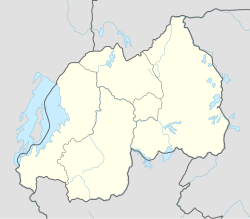| Sainte-Famille Church | |
|---|---|
 | |
| 1°56′40″S30°03′49″E / 1.94455°S 30.06352°E | |
| Denomination | Catholic |
| History | |
| Dedication | Holy Family |
Sainte-Famille Church (Holy Family Church) is a Catholic church in Muhima, downtown Kigali, in Rwanda. It is located on a hill, close to the cell of Rugenge. Sainte-Famille Church was the scene of killings during the genocide in April 1994.

